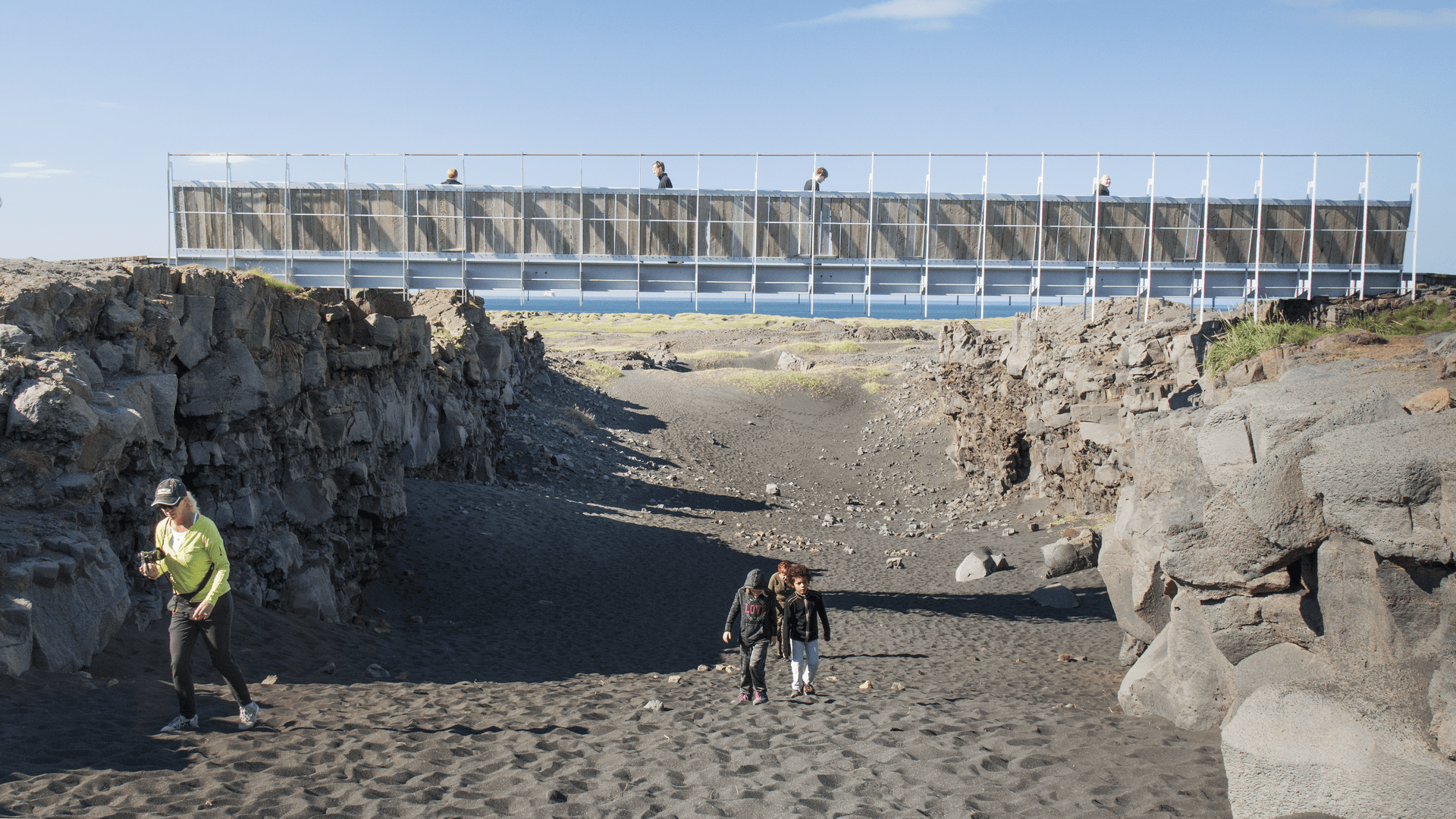The island of Iceland spans over the North American and Eurasian tectonic plates. This line of separation is called the Mid-Atlantic Ridge and runs north to south in the western part of the country. In some sections you can walk right between these massive basalt walls that form a line of separation emerging from the depths of the earth. The Bridge Between Continents is one such place located in the eastern-most end of Reykjanes peninsula. It is off of route 425 about an hour’s drive outside of Reykjavík. It is a popular roadside attraction usually included in many tours of the area.
From the parking area, there is a short paved pathway to the bridge. A few information signs depict the continental drift theory of moving tectonic plates and describe these two massive sections of earth separating from each other at a rate of 2.5-centimeters per year. Most of this activity happens at the depths of the ocean; however, this happens to be a visible section of the rift that crosses over the land.
The bridge is about 15 meters (50 feet) wide and stands on top of two high basalt walls on either side. A plaque in the center serves as a borderline between the Eurasian plate and North American plates. The two sides are marked with signs: ″Welcome to America″ and ″Welcome to Europe.″
Another name for the bridge is “Miðlína” which means “midway point,” and a plaque at the center reads “Midlina, In the footsteps of the gods.” It has also been referred to as “Leif the Lucky Bridge” to commemorate the famous explorer Leif Ericson, who was known for being the first Icelander to set foot in North America over 1,000 years ago. More symbolically, it is said to connect the new and old world.
Volcanic ash covers the terrain and blows across the surface with the wind. These lava fields are a constant reminder of Iceland’s fiery past and unpredictable future. Even though the landscape is seemingly desolate, you are likely to spot some wildflowers, grasses, and mosses. Once you have walked across, walk down the path under the bridge to examine the unique geologies of these continental walls more closely.
Almannagjá is one of the primary attractions of Þingvellir National Park, where you can find this rift extending far to the north: A walkway is constructed down the center of it to facilitate the thousands of people who visit there on a daily basis.


























Comments
Sign In and share them.